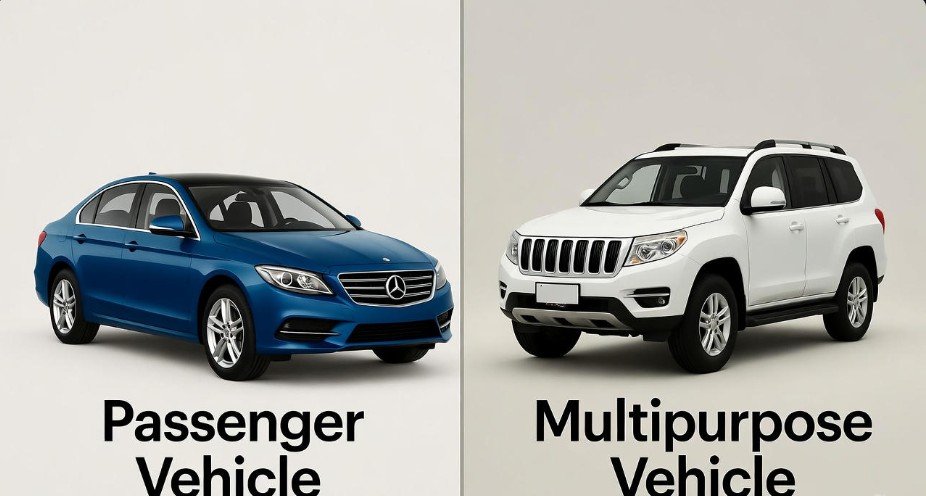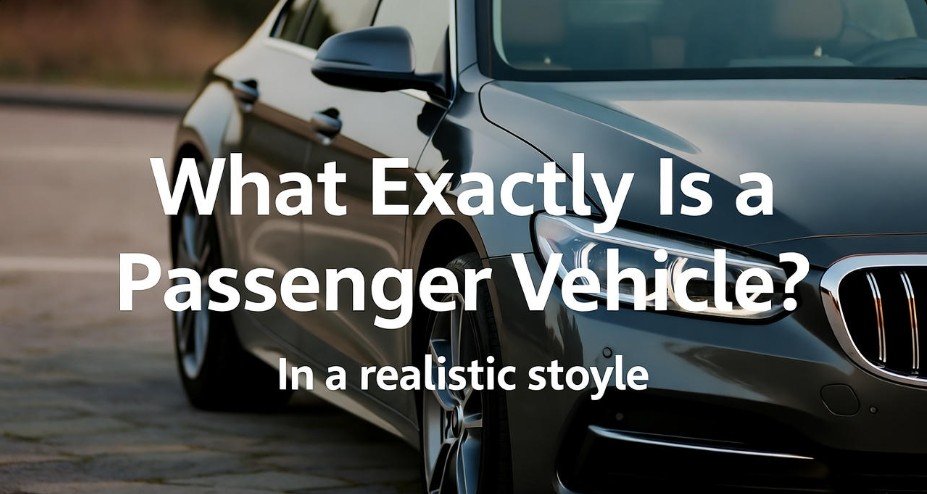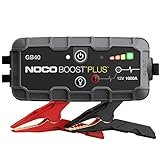Vehicle Classification Guide: Passenger Vehicle Vs Multipurpose Vehicle

If you’ve ever walked into a car dealership and found yourself puzzled between a passenger vehicle and a multipurpose vehicle (MPV), you’re not alone. The automotive world is packed with terms that sound technical but often overlap in real life. Both types of vehicles are designed to transport people and their belongings, yet they serve slightly different purposes. Think of it like comparing a stylish city apartment to a countryside farmhouse — both are homes, but they’re built for different lifestyles.
Understanding the classification isn’t just about sounding smart at a car meet. It’s about making the right choice for your needs, your family, and even your budget. In this guide, we’ll explore what defines a passenger vehicle and an MPV, how they differ in structure, function, and feel, and why these differences matter in your daily life. By the end, you’ll know exactly how to tell which one fits your world best.
What Exactly Is a Passenger Vehicle?

A passenger vehicle, often known as a passenger car, is designed with simplicity, comfort, and everyday practicality in mind. Its main goal? To get people from point A to point B smoothly and efficiently. These cars are typically smaller, lower to the ground, and focused on giving the driver a pleasant experience without unnecessary bulk.
Think of sedans, hatchbacks, coupes, or convertibles — sleek, compact, and perfect for city living. Most of them seat up to five people comfortably, which makes them ideal for small families, couples, or individuals who commute daily. Their charm lies in their fuel efficiency, easy handling, and smooth performance.
Passenger vehicles often feel like an extension of your personality. Whether it’s a family sedan for weekend getaways or a peppy hatchback for quick city errands, they deliver comfort with a dash of style. These vehicles are also engineered with advanced safety features such as airbags, stability control, anti-lock braking systems (ABS), and collision avoidance technology.
In short, passenger vehicles are all about convenience, cost-efficiency, and comfort — perfect for those who value ease over excess.
The Character of a Passenger Vehicle: Designed for Comfort and Control
When you step into a passenger vehicle, everything feels intuitively balanced. The seats hug you just right, the dashboard is clean and driver-focused, and the car glides effortlessly even through traffic snarls. This design isn’t accidental — it’s intentional.
Passenger cars are built with a lower center of gravity, which enhances stability and ensures that cornering or braking feels controlled. Most models use smaller engines that emphasize mileage over muscle, making them a cost-effective choice for daily commuting.
Here’s what truly sets them apart:
-
Smooth handling and precise steering for urban roads.
-
Compact size makes parking and maneuvering easier.
-
Fuel-efficient engines that reduce long-term costs.
-
Lower emissions, making them environmentally friendly.
Imagine cruising through city lights in a quiet sedan while your favorite playlist hums in the background — that’s the calm, composed personality of a passenger car.
What Is a Multipurpose Vehicle (MPV)?
Now, let’s turn our attention to the more spacious and versatile sibling — the multipurpose vehicle, often called an MPV. You can think of it as the “Swiss Army knife” of the automobile world. It’s built not just for passengers but also for cargo, flexibility, and function.
MPVs include vehicles like minivans, SUVs, and vans, designed to carry six or more people comfortably. They often feature adjustable or removable seats, creating extra space for everything from luggage and bicycles to groceries and camping gear. In many ways, MPVs redefine convenience for larger families or those who love road trips.
A defining trait of an MPV is its height and spaciousness. The elevated design allows for easier entry and exit, especially for elderly passengers or children. Sliding doors are common too, adding extra practicality for crowded parking spots.
If a passenger vehicle feels like a city apartment, an MPV feels like a family home — roomier, adaptable, and ready for whatever life throws your way.
The Personality of an MPV: Rugged Yet Refined
Unlike passenger cars that glide through city traffic, MPVs are built for versatility and endurance. These vehicles balance power with practicality, offering the ability to carry both people and their world of belongings without compromising comfort.
What makes MPVs truly shine is their stronger chassis, higher ground clearance, and powerful engines. These characteristics not only make them capable on uneven roads but also ideal for road trips, off-road adventures, or family vacations. You’ll often see them used by large families, transport services, or outdoor enthusiasts who crave flexibility.
Here’s why people love MPVs:
-
Flexible seating (usually 6–8 seats).
-
Larger cargo space, easily adaptable by folding or removing seats.
-
Enhanced visibility due to higher driving position.
-
Better traction and stability on rough terrain.
Driving an MPV feels empowering — like commanding a mobile fortress that can handle whatever lies ahead. Whether it’s a weekend escape to the mountains or a long drive across states, the MPV’s space and strength make it a trusted companion.
Passenger Vehicle Vs Multipurpose Vehicle: The Key Differences
At first glance, both vehicles may seem similar — after all, both are made to carry people. But when you dive deeper, their purposes and personalities start to diverge.
Let’s break it down with clarity and real-world context.
| Feature | Passenger Vehicle | Multipurpose Vehicle (MPV) |
|---|---|---|
| Size & Design | Compact and low to the ground | Larger, taller, and bulkier |
| Seating Capacity | Typically 4–5 passengers | Usually 6–8 passengers |
| Primary Use | Daily commute, city driving | Family trips, heavy use, cargo transport |
| Handling & Performance | Smooth, efficient, focused on comfort | More powerful, built for durability |
| Cargo Space | Limited, smaller trunk | Flexible, adjustable cargo area |
| Fuel Efficiency | Higher due to smaller engines | Lower due to size and weight |
| Safety & Features | Advanced driver-focused systems | Focused on durability and utility |
| Cost & Maintenance | Generally lower | Slightly higher due to size and parts |
From this, it’s clear that passenger vehicles prioritize ease and economy, while MPVs aim for space and strength.
A passenger vehicle suits those who live in urban areas, drive short distances, and prefer fuel efficiency. An MPV, meanwhile, is better for families, group travelers, or anyone who values flexibility over compactness.
Performance and Handling: Comfort vs Capability
The way each vehicle behaves on the road tells a big part of the story. Passenger vehicles are crafted to deliver refined handling — think effortless cornering, light steering, and a suspension that absorbs bumps with grace. Their engines are smaller but tuned for efficiency, so you get excellent mileage without sacrificing comfort.
On the flip side, MPVs have more power under the hood. They’re often equipped with larger engines to handle heavier loads and longer distances. With higher ground clearance, they also manage rough roads or uneven surfaces more confidently. However, that also means they consume more fuel and can feel bulkier when driving in tight urban spaces.
If you think of it metaphorically: a passenger vehicle is like a ballet dancer — graceful, light, and precise. An MPV is like a mountain climber — strong, sturdy, and built for endurance. Both excel in their arenas, but their strengths serve different needs.
Cargo and Seating: Flexibility Meets Functionality
When it comes to carrying capacity, this is where the gap between the two widens dramatically. Passenger cars typically have a fixed layout — two front seats and a rear bench that might fold to make room for luggage. They’re ideal for simple commutes and modest road trips.
In contrast, MPVs are masters of flexibility. Many come with modular seating systems, meaning you can slide, fold, or remove seats to customize the interior. This adaptability makes them a favorite for families, small businesses, and travelers. For instance, one day your MPV can serve as a seven-seater family car, and the next day it can transform into a cargo van for hauling furniture.
Here’s a quick look at how they compare:
-
Passenger Vehicle → 5 seats, fixed setup, small trunk.
-
MPV → 6–8 seats, removable seats, huge trunk area.
So, if you value flexibility over compactness, the MPV wins this round hands down.
Safety and Stability: Two Approaches to Protection
Safety is a major factor for any car buyer. Both passenger vehicles and MPVs prioritize passenger protection, but their approaches differ slightly.
Passenger cars often come packed with advanced safety systems — airbags, lane departure alerts, automatic braking, and adaptive cruise control. Their smaller size also makes them easier to control in emergencies.
MPVs, on the other hand, rely more on stability and structure. Their higher stance gives a commanding view of the road, but it can also mean a higher center of gravity. To counter that, modern MPVs include technologies like electronic stability control (ESC) and traction management systems, ensuring they stay grounded even on uneven roads.
Simply put, passenger vehicles protect through agility and innovation, while MPVs protect through strength and control.
Fuel Efficiency: Where the Passenger Vehicle Takes the Lead
When it comes to fuel economy, passenger vehicles take the spotlight with ease. Their smaller bodies, lighter frames, and aerodynamic designs allow them to sip fuel rather than guzzle it. Whether it’s a compact sedan or a nimble hatchback, these vehicles are built for efficiency. This makes them the ideal choice for those who drive frequently through urban areas, where stop-and-go traffic demands better mileage.
On the other hand, multipurpose vehicles (MPVs), while spacious and powerful, tend to consume more fuel. Their larger engines and heavier structures mean more energy is required to move the vehicle, especially when fully loaded. That’s not necessarily a bad thing — you’re trading mileage for capability. Families or businesses that frequently transport multiple passengers or cargo may see this as a fair compromise.
If you’re someone who commutes daily, a passenger vehicle will save you more money at the pump. But if you’re after a car that can handle long trips with your family, carry camping gear, or haul luggage with ease, then an MPV’s versatility might outweigh its fuel consumption.
Durability and Maintenance: The Long-Term Game
Durability often becomes the dealbreaker for many buyers. Passenger vehicles, designed primarily for city and highway driving, generally experience less mechanical strain. They’re easier to maintain and often have lower maintenance costs. Routine services like oil changes, brake checks, and tire rotations are relatively affordable.
MPVs, however, tell a different story. Because of their larger engines and heavier builds, they require more intensive maintenance. Brake pads, suspension parts, and tires wear out faster when a vehicle carries more weight or navigates challenging terrains. Also, replacement parts for MPVs can be more expensive due to their size and complexity.
That said, many MPVs are built for endurance. Their robust construction means they can handle wear and tear for years without major issues, making them an excellent investment for those who need long-term reliability.
So, if your goal is a low-maintenance daily driver, a passenger vehicle fits best. But if you’re focused on longevity and versatility, an MPV may win you over.
Driving Experience: The Feel Behind the Wheel
Driving each type of vehicle feels distinctly different. Passenger vehicles offer a sense of intimacy — you feel connected to the road. The car responds quickly, turns easily, and delivers a quiet, comfortable ride. It’s like wearing your favorite pair of shoes: light, familiar, and effortlessly functional.
Multipurpose vehicles, however, give you a sense of command. Sitting higher up, you can see over other vehicles, which adds confidence and control. MPVs don’t corner as sharply as sedans, but they make up for it in stability. Their driving experience feels more like guiding a steady ship — not fast or flashy, but reassuring and solid.
Here’s what to consider:
-
Passenger vehicles are easier for new drivers or city commuters.
-
MPVs are better for those who prioritize visibility, strength, and passenger space.
So, your driving style should influence your choice. If agility matters most, choose a passenger car. If confidence and power define your drives, an MPV will feel just right.
Cost Comparison: Which Offers More Value for Money?
Let’s talk numbers — the real-world factor that shapes every car purchase. Passenger vehicles usually come with a lower purchase price. Their compact designs and smaller engines make them affordable, both upfront and in terms of long-term ownership costs like fuel and maintenance.
In contrast, MPVs tend to have a higher initial price tag. However, that higher cost buys you more — more space, more power, and more flexibility. Families often find that paying extra for an MPV saves them from needing a second car.
Here’s a simplified cost comparison:
| Category | Passenger Vehicle | Multipurpose Vehicle (MPV) |
|---|---|---|
| Purchase Price | Lower | Higher |
| Fuel Economy | Excellent | Moderate |
| Maintenance Cost | Affordable | Slightly higher |
| Insurance Cost | Generally lower | Moderate to high |
| Resale Value | Stable | Depends on condition and use |
If your focus is cost-efficiency, the passenger car takes the lead. But if you need a long-term family or business companion, the MPV’s price may justify itself over time.
Tint Percentage Laws: Are There Differences Between Passenger Vehicles and MPVs?
One question that often confuses drivers is whether tint laws differ between passenger vehicles and MPVs. The short answer? Not usually.
In most U.S. states, window tinting regulations apply equally to both vehicle types. These laws are designed to ensure driver visibility and road safety. For example, many states limit front-side window tints to around 50% visibility, meaning the tint can block half the light. Rear windows often have more flexibility, sometimes allowing up to 20–30% tint for privacy.
However, some states do classify SUVs and vans differently, allowing slightly darker rear tints because they’re often used for commercial or family purposes.
It’s crucial to check local regulations before applying tint to your vehicle. You don’t want a fine or a failed inspection just because of window shade differences.
And remember — vehicle manufacturers and insurers may also have specific tint policies. Always confirm before customizing.
Which One Should You Choose: Passenger Vehicle or MPV?
Choosing between a passenger vehicle and an MPV ultimately depends on your lifestyle, priorities, and daily needs.
You should go for a passenger vehicle if you:
-
Live in a city or suburban area.
-
Drive short to medium distances regularly.
-
Prioritize fuel efficiency and comfort.
-
Don’t need to carry many passengers or heavy cargo.
You should go for a multipurpose vehicle (MPV) if you:
-
Have a large family or travel in groups.
-
Frequently carry luggage, sports gear, or business supplies.
-
Need a spacious and durable vehicle for long trips.
-
Prefer a commanding driving position and versatility.
In short, passenger vehicles are ideal for everyday life, while MPVs are perfect for those who need flexibility, space, and endurance.
Environmental Impact: The Green Factor
In an age where sustainability matters, passenger vehicles tend to be more environmentally friendly. Their smaller engines consume less fuel, and hybrid or electric options are widely available. These vehicles produce fewer CO₂ emissions, which makes them ideal for eco-conscious drivers.
MPVs, due to their weight and size, naturally emit more pollutants. However, newer MPV models are catching up — many manufacturers are introducing hybrid MPVs and eco-optimized engines that balance performance with reduced emissions.
So, if your priority is going green and saving fuel, the passenger car still leads. But if you need a larger vehicle and still care about the planet, opt for a modern, eco-certified MPV with improved emission standards.
FAQs: Clearing Up Common Confusions
1. What is the main difference between a passenger vehicle and a multipurpose vehicle?
The main difference lies in size, purpose, and capacity. Passenger vehicles are smaller and designed mainly for comfort and daily commutes, while MPVs are larger, offering more seating and cargo space for families or groups.
2. Can a multipurpose vehicle be used as a passenger car?
Yes, absolutely. Many MPVs are used for daily driving, school runs, and family outings. They’re versatile enough to serve as both a personal and family vehicle.
3. Which is safer — passenger vehicle or MPV?
Both have strong safety standards. Passenger vehicles often feature advanced safety technology, while MPVs provide better visibility and structural stability. The best choice depends on your driving habits and road conditions.
4. Are MPVs harder to drive than regular cars?
They’re larger, so parking and turning can take some getting used to. However, modern MPVs have features like parking sensors, cameras, and driver assists that make handling much easier.
5. Do MPVs cost more to insure?
Yes, usually. Because they’re larger and more expensive to repair, insurance premiums can be slightly higher compared to compact cars.
6. Are passenger vehicles better for long trips?
If you’re traveling light, yes. Passenger cars are smoother and more fuel-efficient for long drives. But for group trips with luggage, an MPV offers more comfort and space.
7. Do both vehicle types have electric or hybrid versions?
Yes, increasingly so. Many manufacturers now produce electric sedans and hybrid MPVs, giving eco-conscious drivers multiple options.
8. Which has a better resale value — a passenger car or an MPV?
It depends on condition and mileage. Generally, well-maintained MPVs retain value better due to their demand among families and transport services.
Conclusion: Understanding What Fits Your Life
At the end of the day, the passenger vehicle vs multipurpose vehicle debate isn’t about which is better — it’s about which fits your lifestyle. A passenger vehicle gives you efficiency, simplicity, and comfort, perfect for the everyday commuter or small family. A multipurpose vehicle (MPV) offers space, strength, and flexibility for larger groups or adventure-driven souls.
Both serve their roles beautifully. The key is to look beyond the metal and think about how you’ll use your car — your daily routes, passengers, and personal priorities.
Choosing the right vehicle isn’t just about horsepower or seating numbers. It’s about finding that perfect match between your life and your ride.





